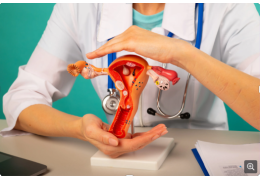New Danish research examines how lactose affects the development of cervical cell changes (CIN1–CIN3) and the body's...
Updated blog post: This article was originally published as a PDF under the title “New Danish study on cervical cell changes”. The content has now been moved to the blog module to make it easier to read, search and share. The article is based on a Danish study that provides new insights into how cervical cell changes develop over time.
New Danish study on cervical cell changes (CIN1, CIN2 and CIN3)
A newly published Danish study examines how cervical cell changes progress from stage 1 to 3 over a two-year period.
Background - What are cervical cell changes?
The study focused on the stages of cervical cell changes:
Cervical cell changes are described as CIN1 (mild), CIN2 (moderate) and CIN3 (severe changes).
- CIN1 is not treated.
- CIN2 can be monitored, with treatment only initiated if the condition worsens.
- In Denmark, women with CIN2 are offered follow-up examinations every six months for up to two years.
- Currently, no treatment is offered during the observation period.
- CIN3 is treated with a cone biopsy (LEEP/conization), which may have several side effects.
Progression of CIN2 - When cell changes worsen
“This means that treatment is not initiated until things begin to deteriorate. In other words, when a woman with CIN2 experiences progression, the only option available is a cone biopsy.
We must take this seriously and look at how we can improve their chances of recovery or prevent further deterioration.”
Results from the Danish study
The study included 11,056 women diagnosed with CIN2 who had no previous history of cervical cell changes.
An improvement was observed in 28% of the women after six months and in 63% after two years.
About half of those who improved returned to normal cervical tissue, while the other half improved to CIN1.
This shows that, fortunately, it is possible to recover naturally as the body itself can fight the condition - and win.
Deterioration was found in 15% of participants after six months and in 33% after two years.
For 90% of this group, the progression occurred within the first 12 months. Cervical cancer was diagnosed in 0.3% of the group after two years. “Still a small proportion, but devastating for the women affected.”
The body can often heal cervical cell changes naturally
The study shows that many women with CIN2 improve without surgical intervention when the body is allowed to heal naturally. This highlights the importance of supporting the body’s natural balance and vaginal microbiota – for example, by maintaining healthy mucous membranes and a stable intimate environment.
Source
Lycke KD, Kahlert J, Damgaard RK, et al. Clinical course of cervical intraepithelial neoplasia grade 2: a population-based cohort study. Am J Obstet Gynecol. 2023;229:656.e1-15.










Leave a comment